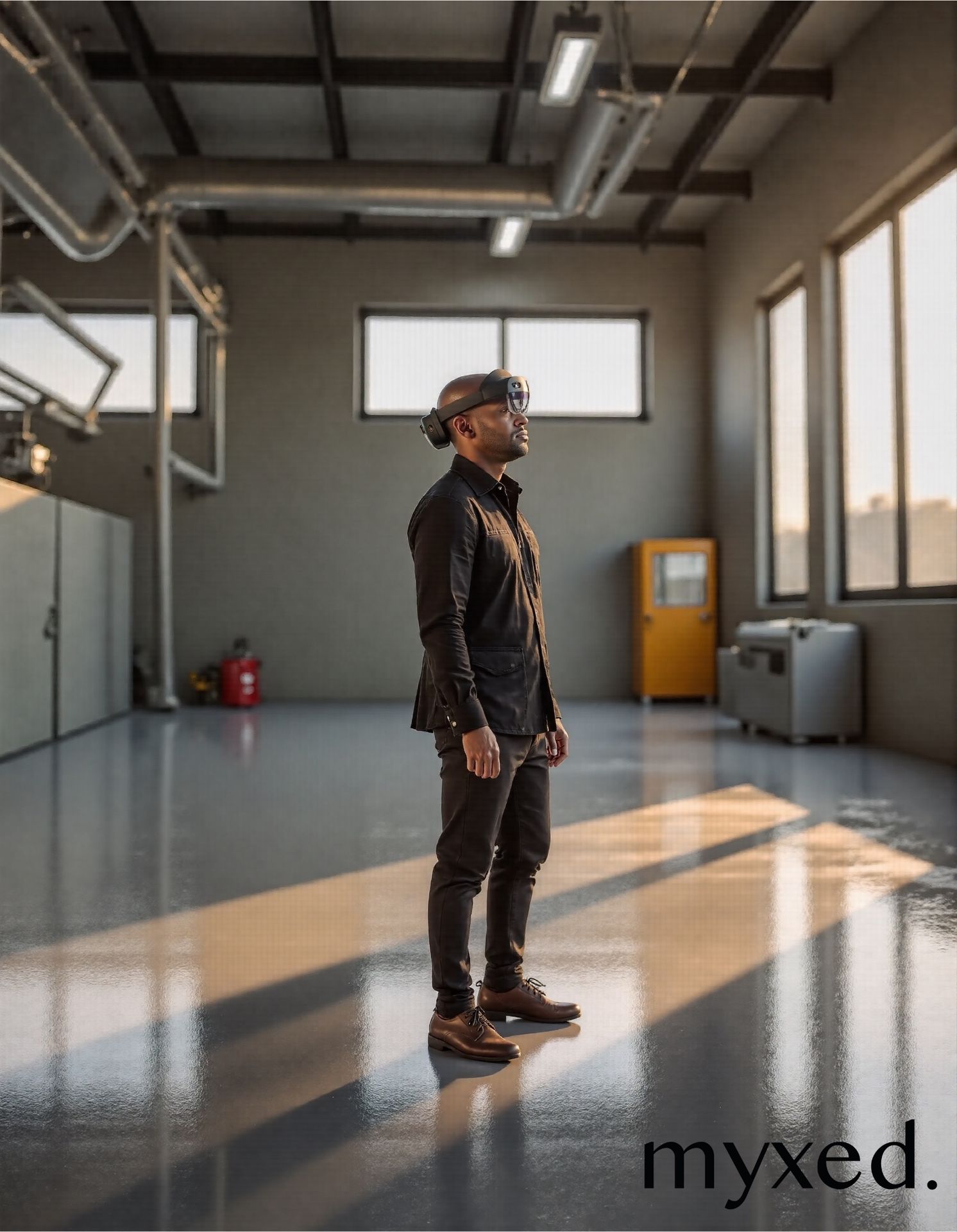Augmented reality: definition and professional uses

Augmented reality (AR) overlays digital content onto our physical environment in real time. It is used for training, marketing, maintenance, or product visualization.
What is augmented reality?
Augmented reality (AR) is an immersive technology that enhances the perception of the real world by adding virtual objects (texts, images, 3D animations) in real time. Unlike virtual reality (VR), which immerses the user in a 100% digital universe, AR maintains a real-world anchor.
Augmented reality is an essential building block of what is now called spatial computing. It finds applications in various sectors such as industry, training, healthcare, commerce, and heritage.
What is augmented reality used for?
Here are some concrete use cases:
- Industrial training: simulating a complex procedure in a real situation
- Maintenance: guide an operator step by step with overlay instructions
- Selling: preview a piece of furniture in your living room via your smartphone
- Health: helping to plan a surgery with the overlay of modeled organs
- Museums: enhancing exhibitions with 3D historical reconstructions
How does augmented reality work?
To credibly blend virtual and real, AR relies on a combination of technologies:
- Cameras and sensors: capture the environment in real time
- Geolocation, GPS, gyroscope: allow for the orientation and positioning of virtual objects
- Image and object recognition: to anchor a 3D model onto a physical support
- 3D Engines and AI: manage rendering and interactions
The devices vary: smartphone, tablet, smart glasses, or headsets (like HoloLens or Magic Leap).
Augmented reality, virtual reality, mixed reality: what are the differences?
- Virtual reality: 100% digital, the user is cut off from the real world
- Augmented reality: virtual elements enhance the real, but without deep interaction
- Mixed reality: advanced fusion between the physical and the digital, with complex interactions
→ To go further, read our definition of Mixed Reality.
Why integrate augmented reality into your business?
- Accelerate decision-making through a better 3D understanding of projects
- Train more efficiently without mobilizing costly infrastructure
- Reduce errors by displaying information at the right time, in the right place
- Enhance the offering through immersive configurators or innovative marketing presentations
Myxed: the expert in industrial augmented reality
With recognized expertise in mixed reality, Myxed supports industries in integrating immersive solutions tailored to operational challenges.
→ Discover our mixed reality use cases for the industry.
Conclusion
Augmented reality is a powerful lever for digital transformation for businesses. Far more than a gadget, it is a strategic tool that combines information, user experience, and efficiency.
Do you want to integrate AR into your projects? Let's talk about it.
Frequently Asked Questions
Here are some frequently asked questions about augmented reality.
Augmented reality relies on the overlay of digital elements (texts, 3D objects, sounds) onto the perception of the real world. The fundamental principle is to enrich the user's immediate environment with contextual virtual information that is accessible in real-time. This technology uses sensors, cameras, recognition algorithms, and 3D engines to seamlessly and effectively merge the real and the virtual.
The purpose of augmented reality is to enhance understanding, decision-making, and efficiency by providing information or visual tools where they are useful. In industry, it allows for the visualization of data on a machine in use; in training, it enables learning through action; in commerce, it helps to envision the purchase. AR creates bridges between digital data and human needs, in the right context.
The technological concept of augmented reality took shape as early as 1957, thanks to Morton Heilig, an American cinematographer. He designed the Sensorama, a multisensory immersive machine that integrated sounds, images, movements, and smells, foreshadowing today's immersive experiences. However, it was in 1990 that the term "augmented reality" was formalized by Tom Caudell and David Mizell, engineers at Boeing.
It depends on the level of customization desired. For a simple application with existing 3D models, a Unity or Unreal Engine developer will suffice. But for a more ambitious project, it is necessary to combine skills in UX design, 3D modeling, cloud, and often AI. Myxed offers turnkey support thanks to its augmented reality expertise team with these cross-disciplinary skills.
Yes, potentially. Its uses vary: in luxury for training in gestures, in automotive for assembly, in healthcare for pre-operative visualization, or in culture to enhance the visitor experience. It is mainly the project's objectives and the context of use that determine the relevance of augmented reality.